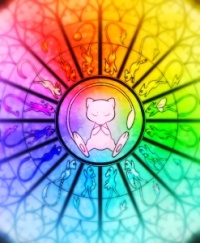The Omnipedia
Shincleff, the True Grimoire :: The Legend; Herald of the Veritas

Posts : 3563
 Points : 5028 Points : 5028
Reputation : 0
Join date : 2014-11-04
 |  Subject: Okami List Subject: Okami List  Tue Nov 16, 2021 6:19 am Tue Nov 16, 2021 6:19 am | |
| Okami (Spirits/Nature Spirits)
Kami (Japanese: 神?) are the spirits or phenomena that are worshiped in the religion of Shinto. They are elements in nature, animals, creationary forces in the universe, as well as spirits of the revered deceased. Many Kami are considered the ancient ancestors of entire clans, and some ancestors became Kami upon their death if they were able to embody the values and virtues of Kami in life. Traditionally, great or charismatic leaders like the Emperor could be kami.[1]
In Shinto, Kami are not separate from nature, but are of nature, possessing positive and negative, good and evil characteristics. They are manifestations of musubi (結び),[2] the interconnecting energy of the universe, and are considered exemplary of what humanity should strive towards. Kami are believed to be “hidden” from this world, and inhabit a complementary existence that mirrors our own, shinkai [the world of the Kami] (神界).[3] To be in harmony with the awe inspiring aspects of nature is to be conscious of kannagara no michi [the way of the Kami] (随神の道 or 惟神の道).[2]
Though the word Kami is translated in multiple ways into English, no one English word expresses its full meaning. In this way, the ambiguity of the meaning of Kami is necessary, as it conveys the ambiguous nature of Kami themselves.
Kami is the Japanese word for a god, deity, divinity, or spirit.[5] It has been used to describe "mind" (心霊), "God" (ゴッド), "supreme being" (至上者), "one of the Shinto deities", an effigy, a principle and anything that is worshipped.[6]
Although "god" or "deity" is the common interpretation of kami, some Shinto scholars argue that such a translation can cause a misunderstanding of the term.[7] The wide variety of usage of the word can be compared to the Sanskrit Deva and the Hebrew Elohim, which also refer to God, gods, angels or spirits.
Kami may, at its root, simply mean "spirit", or an aspect of spirituality. It is written with the kanji "神", Sino-Japanese reading shin or jin; in Chinese, the character is used to refer to various nature spirits of traditional Chinese religion, but not to the Taoist deities or the Supreme Being.
In the ancient Shinto traditions there were 5 defining characteristics of Kami.[13]
Kami are of two minds. They can nurture and love when respected, or they can cause destruction and disharmony when disregarded. Kami must be appeased in order to gain their favor and avoid their wrath. Traditionally, Kami possess two souls, one gentle (nigi-mitama) and the other assertive (ara-mitama); additionally in Yamakage Shinto kami have two additional souls that are hidden, one happy (sachi-mitama) and one mysterious (kushi-mitama).[14]
Kami are not visible to the human realm. Instead they inhabit sacred places, natural phenomena or people during rituals that ask for their blessing.
They are mobile, visiting their places of worship, of which there can be several, but never staying forever.
There are many different varieties of Kami. There are 300 different classifications of Kami listed in the Kojiki, and they all have different functions, such as the Kami of wind, Kami of entryways, and Kami of roads.
Lastly, all Kami have a different guardianship or duty to the people around them. Just as the people have an obligation to keep the Kami happy, the Kami have to perform the specific function of the object, place, or idea they inhabit.
List of 'Okami'
(WIP) | |
|
